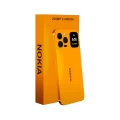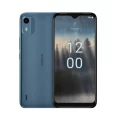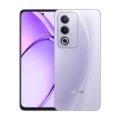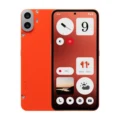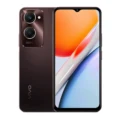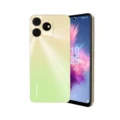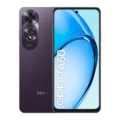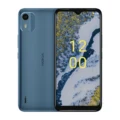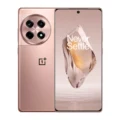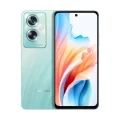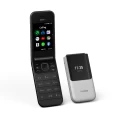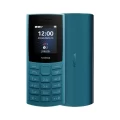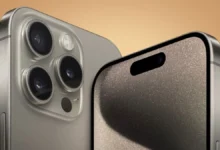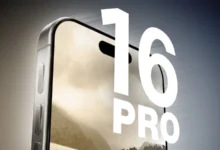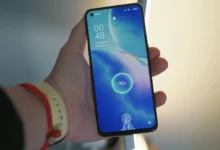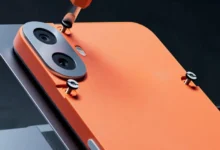Nokia 8210 4G
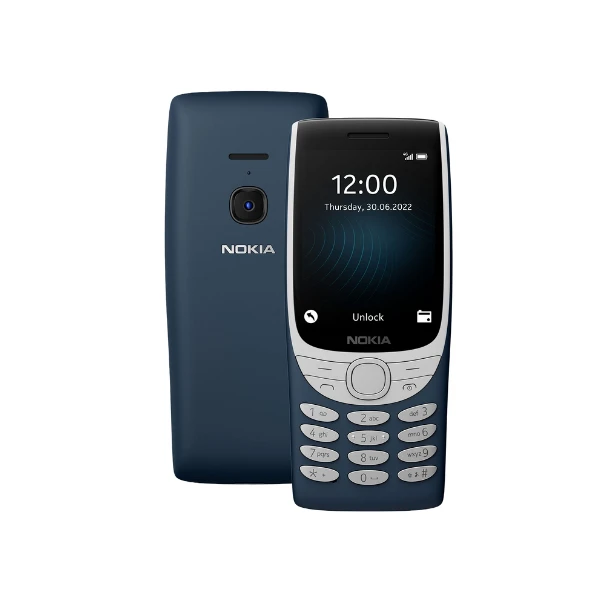


-
Display: 2.8 inches (7.11 cm)
-
CPU: Unisoc T107
-
RAM: 48 MB
-
ROM: 128 MB
-
Camera: 0.3 MP
-
Battery: 1450 mAh
Specifications
General
| Name | Nokia 8210 4G |
| Brand | Nokia |
| Model | 8210 4G |
| Announced | 12 July, 2022 |
| Release Date | 28 July, 2022 |
| Manufacturer Manufacturer Company: A manufacturer is a company engaged in the production of products. | Nokia |
| Made in Made in: Made in is a label or indication on a product that specifies the country where the product was manufactured or produced. | Finland |
Display
| Display Type | TFT |
| Screen Size | 2.8 inches (7.11 cm) |
| Resolution | 240 x 320 pixels |
| Pixel Density Pixel Density: Pixels per inch and pixels per centimetre are measurements of the pixel density of an electronic image device, such as a computer monitor or television display, or image digitizing device such as a camera or image scanner. | 143 ppi |
| Multitouch Multitouch: Smartphone multitouch is a technology that allows the screen to recognize and respond to multiple touch points simultaneously. It enables users to perform gestures like pinch-to-zoom, rotation, and swiping with multiple fingers, enhancing the overall interactivity and usability of the device. | |
| Screen to Body Ratio Screen-to-body ratio: Percentage of a device's front surface occupied by the display, indicating how efficiently the space is used for the screen. Higher ratios mean more immersive displays. | 32.9% |
Design
| Height | 131.3 mm |
| Width | 56.2 mm |
| Thickness | 13.8 mm |
| Weight | 107g |
| Colors | Blue, Red, Sand |
Camera
| Rear Camera | Single |
| Resolution | 0.3 MP Primary Camera |
| Rear Flash | No |
| Image Resolution | 640 x 480 Pixels |
| Camera Features | Digital Zoom |
Battery
| Capacity Battery Capacity: Battery capacity in smartphones refers to the amount of energy a battery can store, typically measured in milliampere-hours (mAh). It indicates how long a battery can power the device before needing a recharge. | 1450 mAh |
| Battery Type | Li-ion |
| Removable Removable Battery: A removable battery in a smartphone is a battery that users can easily take out and replace without tools. Removable batteries were more common in older models; modern smartphones favor non-removable batteries for sleeker designs and better water resistance. | |
| Talk Time |
Up to 6.2 Hours (4G) Up to 7.2 Hours (3G) Up to 8 Hours (2G) |
| Standby Time |
Up to 19.9 Hours (4G) Up to 19.3 Hours (3G) Up to 20.4 Hours (2G) |
| Fast Charging | Yes |
Performance
| Chipset Chipset: In smartphones, the chipset is like the device's brain, controlling everything from processing tasks to managing connectivity. It includes the CPU, GPU, modem, and other components, determining the device's performance and capabilities. Different smartphones use different chipsets made by companies like Qualcomm or MediaTek. | Unisoc T107 |
| CPU CPU (Central Processing Unit): The CPU, commonly known as the processor, is responsible for processing instructions to perform various functions that enable a device to operate properly. Often described as the brain of computers, smartphones, and tablets, the CPU plays a crucial role in executing tasks and running applications on these devices. Smartphones and tablets rely heavily on their processors to carry out every task, from running apps to managing system operations. Therefore, the processor is an incredibly important factor to consider when selecting any type of computing device, including smartphones. | Single core, 1 GHz, Cortex A7 |
| Architecture Instruction Set Architectures (ISAs): In the context of smartphones, "architecture" refers to the design and structure of the processor, which determines how it processes information and executes instructions. This encompasses the processor's instruction set, memory management, and overall design principles. One common term related to architecture is "64-bit architecture," which has significant implications for performance and capabilities. | 32 bit |
| Fabrication Semiconductor Fabrication: Fabrication in the context of semiconductors and microprocessors refers to the process of manufacturing integrated circuits (ICs) or chips. This involves creating the physical structures of a chip, such as transistors and other electronic components, on a silicon wafer. The term "fabrication" is often used interchangeably with "process node" or "technology node," which indicates the manufacturing technology used to create these chips. | 22 nm |
| RAM Random Access Memory (RAM): RAM is a type of computer memory that is used to store data temporarily while a device is in use. RAM is a critical component in smartphones, enabling fast access to data, smooth multitasking, and efficient operation of applications. The amount and type of RAM can significantly impact the performance and user experience of a smartphone. | 48 MB |
Storage
| ROM ROM (Read-Only Memory): In the context of smartphones and other electronic devices, ROM typically refers to the built-in storage where the operating system, system files, and pre-installed apps are stored. | 128 MB |
| MicroSD Card MicroSD Card Slot: A microSD card is a small, portable storage device used to expand the storage capacity of electronic devices, including smartphones, tablets, digital cameras, and more. It's inserted into a device's MicroSD card slot to store extra photos, videos, music, and other data. | Yes |
| Expandable Storage | Yes, Up to 32 GB |
Network
| Number of SIM | Dual SIM |
| SIM Size | Nano |
| Network Support | 2G, 3G, 4G |
| Network Speed | HSPA |
| Technology | GSM / HSPA / LTE |
| VoLTE VoLTE (Voice over LTE): VoLTE is a technology that allows voice calls to be made over a 4G LTE network, rather than the traditional 2G or 3G networks. In summary, VoLTE enhances call quality and functionality by using the 4G LTE network for voice communications. | |
| 2G Bands 2G (Second Generation): 2G is a wireless technology standard for mobile telecommunications that was introduced in the 1990s and enabled the transmission of digital voice and data services, using digital transmission instead of analog. It has slower data speeds compared to later generations like 3G and 4G. | GSM 1800 / 1900 / 850 / 900 MHz |
| 3G Bands | UMTS 1900 / 2100 / 850 / 900 MHz |
| 4G Bands |
TD-LTE 2600(band 38) / 2300(band 40) / 2500(band 41) FD-LTE 2100(band 1) / 1800(band 3) / 2600(band 7) / 900(band 8) / 700(band 28) / 850(band 5) / 800(band 20) |
| GPRS GPRS (General Packet Radio Service): General Packet Radio Service is a packet-oriented mobile data standard on 2G and 3G cellular communication networks' global system for mobile communications (GSM). In summary, GPRS is a mobile data service that enhances the data capabilities of 2G and 3G networks, providing basic internet and multimedia services. | |
| EDGE EDGE (Enhanced Data rates for GSM Evolution): Enhanced Data rates for GSM Evolution is a technology used to improve the data transmission rates of 2G GSM networks. In summary, EDGE boosts the data transmission capabilities of 2G networks, providing faster speeds and improved performance for mobile internet access. |
Connectivity
| Bluetooth | Yes, Bluetooth v5.0 |
| Browser Browser: A browser is a software application used to access and view information on the World Wide Web. It allows users to navigate through websites, view web pages, and interact with various online content such as text, images, videos, and other multimedia resources. | Yes, HTML |
| USB Interface | Yes, microUSB 2.0 |
Sensors
| Games | Yes |
| Other Facilities | Calculator, Stopwatch, Calendar, Alarm |
Multimedia
| FM Radio | |
| Loudspeaker | Yes |
| Earphone Jack | 3.5 mm |
| Voice Recorder | Yes |
| Video Playback |
3GP, MP4 |
| Audio Playback | MP3 |
| Ringtone Formats | Music ringtones, Vibration |
| Video Formats | MP4 |
| Image Formats | JPG |
Nokia has always been a leader in the mobile phone industry. The brand has introduced a new variant, the Nokia 8210 4G, which combines the classic design of the Nokia 8210 with modern connectivity options. This phone has a 2.8-inch TFT display with a resolution of 240 x 320 pixels and a pixel density of 143ppi. Let’s dive deeper into the details of this classic phone with modern features.
NOKIA 8210 4G DETAILS
Display and Camera
The Nokia 8210 4G features a 0.3MP lens on the rear side with a digital zoom feature. It captures images with the highest resolution of 640 x 480 pixels. However, the brand has not provided an LED flash with this camera. The phone’s display is a TFT screen, and it is 2.8 inches in size. The phone’s screen size is perfect for users who want a phone that is easy to carry and use with one hand.
Performance and Battery
It has 48MB of RAM along with a Unisoc T107 chipset. It also has a 32-bit, Single-core Cortex A7 CPU that performs at the highest frequency of 1GHz. The Nokia 8210 4G derives its operational energy from a 1450mAh Li-ion type battery. Moreover, users can even remove this battery from the device, making it easy to replace if needed.
Storage and Connectivity
The Nokia 8210 comes with 128MB of internal storage space. If required, users can also increase the storage capacity by up to 32GB. For connectivity, this phone supports 4G VoLTE network connections, enabling users to browse the internet at high speed. Additionally, users can make other connections with the Nokia 8210 4G via micro USB 2.0 and Bluetooth v5.0.
Nokia 8210 4G Price in the USA 2024
If you’re on the hunt for a simple yet reliable feature phone, the Nokia 8210 is a fantastic option to consider. The good news is that it’s now available in the USA at an affordable price of only $80.00!
This sleek device comes in three stunning color variants Sand, Blue, and Red, making it perfect for those who want a phone that looks as good as it performs. Whether you’re someone who wants to stay connected with family and friends, or just need a reliable phone for your daily tasks, the Nokia 8210 is sure to meet your needs.
Pros and Cons of Nokia 8210 4G
Before making a purchase, it’s always important to weigh the pros and cons of a mobile phone. The Nokia 8210 4G feature phone is no exception. While it offers some impressive features, it also has a few drawbacks that potential buyers should be aware of.
Pros
- Affordable price point
- Clear and vibrant display
- Decent 0.3MP camera
- Long-lasting battery life
- Easy-to-use interface
Cons
- No LED flash with the camera
- Lack of front-facing camera
- No Wi-Fi connectivity
- No touchscreen functionality
- Basic features may not be suitable for advanced users
Verdict
The Nokia 8210 4G is an excellent phone for users who want a compact phone with modern connectivity options. Its classic design and lightweight nature make it easy to carry around. While the phone has some limitations, such as limited storage space and no front camera, it is still a reliable device that can handle basic communication needs.
Videos
Reviews
Disclaimer Note
The information on this page may not be entirely accurate or up-to-date. Product prices are approximate and may vary based on taxes, import duties, and other factors.


